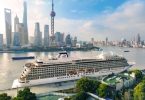I cannot recall ever reading a restaurant wine list and noting the wines of Corsica… so I classified this wine event as an ADVENTURE.
French or Italian
Corsica is located under 90 minutes by air from Paris and is the most mountainous island in the Mediterranean Sea (between the southeast coast of Provence and the west coast of Tuscany). Geographically closer to Italy, the country has actually been governed by France since the late 18th century.
Corsica was developed by Greek Phocean traders (570 BC) shortly after their founding of Marseille. As active wine growers they planted indigenous vines as well as cuttings from abroad. Unfortunately, the cultivation of wine ceased during the late 7th and early 8th century AD as Islamic rule prevailed and wine production was severely limited. In 800 AD Corsica came to be controlled by Pisa in Tuscany and the grapes flourished and wine was made. 1200 AD the Genoese removed the Pisans now and controlled the region; fortunately, they continued to encourage viticulture and introduced a Sangiovese grape that would become the Nielluccio. Corsica continued as a Genoese state until the mid-18th century when it was ceded to France.
In 1769 Napoleon was born in the town of Ajaccio, wine cultivation continued to thrive, and the French encouraged the industry to bolster a sagging economy. Regrettably, in the mid-19th century, the Phylloxera epidemic crippled the wine industry on Corsica and poor economic conditions forced people to leave the island. Finally, in 1962, people started to return to Corsica, planted new vines and the wine industry had a fresh start. Ill-advisedly, the focus was on quantity over quality. Finally, in the 1980s there was a new effort to improve the quality of the wines from the region and wine makers were encouraged to use new technology.
In the 1990s the wines of Corsica became popular as an alternative to French wine selections. The European Union grant programs have encouraged many Corsican wineries to upgrade their facilities with temperature controlled stainless steel fermentation tanks. Corsica appears to be ready to become a major player in the global wine market.
Mixed Blessings
The Italian heritage of the locale can be detected in the wines made from the Italian classics of Vermentino and Sangiovese (known as Rolle and Nielluccio in Corsica). The classic French grapes are also apparent and Grenache is a primary player in many Corsican red wines while Syrah, Mourvedre, Cinsaut and Carignan play supporting roles.
Climate control
Classified as Mediterranean based on climate, Corsica has higher sunshine levels than any part of mainland France (and less rainfall). The growing season is excellent for high-output viticulture as well and its microclimates produce flavorful and interesting wines.
The number one white grape is Vermentino/Roole (more French than Italian) and Sciaccarellu is found in the rosés. The rosés are soft in taste, discreet in color and peppery to taste as a result of the Niellu which means black, dark or hard but produces very fine and elegant rosés. The reds present a strong, deep color while the taste is structured and delicate, suggesting fresh fruit and blossoming violets, leading to spices and flowers. Vermentinu (white) wines are dry and fruity with a floral aroma with hints of apples and almonds. Well balanced on the palate, leaving a cool, mineral and fruity memory.
Unique to the region, Pinor Noir, Tempranillo and Barbarossa grow alongside each other and 40+ other grape varieties (mostly Spanish, Italian and French origin) are included in the quality wines. Most of the grapes used produce IGP wines – sold as IGP Ile de Beaute- Isle of Beauty – a traditional French synonym for Corsida. The conditions for ICP are less stringent than AOC appellation although there are nine AOP appellations and an island-wide vin de pays designation Vin de Pays de l’Île de Beauté
Vins de Corse. Being Collaborative.
For this tasting I focused on the rosés. They are delicious as an aperitif or as an accompaniment to a wide array of food. Fruity rosés pair well with spicy foods while dry and crisp rosés partner well with grilled salmon. Other rosés do very well when teamed with shellfish, sushi, salads, quiche and pork. My personal favorite’s rosés include:
• Domaine D’Alzipratu. Pumonte Rose 2014. AOP Corse Calvi. 100 percent Sciaccarellu
Almost clear to the eye with only a hint of the palest of a pink hue… like chiffon caught by a summer breeze. Hints of sour apple to the nose. Pleasing tastes of soft and fresh apricots, pears and strawberries tantalize the palate leaving a slight acidity behind which perks up the taste buds – leading to a very happy memory. Pair with cold lobster salad and fresh fruit with sweet mascarpone.
Located in the Balagne region, Domaine d’Alzipratu started producing wine in the 1960s on land previously owned by a convent. Set at the bottom of 2,000m – high Monte Grosso, of decomposed granite, the land has been farmed for centuries. It is the highest possible location to grow grapes on the island. Pierre Acquaviva plants only native grape varieties and created a tasting room in the underground bottle-ageing cellar.
• Domaine Maestracci E Prove 2014. AOP Corse-Calvi. Miellucciu and Sciaccarellu
Think of the palest of pink color that defines the rind of a watermelon – and this is what your eye will enjoy in the glass. To the nose, a bit of acidity from strawberries and the sweetness of the first roses of summer. Slightly sweet finish with barely a hint of ripe watermelon. Serve chilled with charcuterie or avocado and smoked salmon.
Inland from Calvi, in the foothills of Monte Grossu, visitors find the granite plateau of Reginu , an area known for U Vinu de E Prove – the wine of Prove, a micro-climate for growing wine. The zone experiences hot and dry daytime temperatures with high altitudes cool nights within a short distance from the sea and maritime winds. The site was once used for growing olives for France. In 1945 Roger Maestracci bought the property and adapted the space for wine production. In the 1980s Maestracci’s son-in-law, Michel Raoust began to run the business. The red spends at least two years in large oak casks while the white is bottled young to retain freshness. All the grapes for the rosés are picked by hand and the Niellucciu and Sciaccarellu grapes are co-planted in the same parcel and vinified together using a direct press method without malolactic fermentation. The wine is aged in stainless steel.
• Clos Culombu Rosé 2014. Corse Calvi. Niellucciu 50 percent, Sciaccarellu 30 percent, Grenache 20 percent
Baby pink hue to the eye, slightly citrus to the nose suggesting kiwi and grass. Leaves a sweet memory on the palate. Pair with lamb chops with mint jelly, or drink as a light desert wine with fresh fruit and sponge cake.
The Balagne, on the north-west coast, is known as the Garden of Corsica and the location for the oldest, driest appellation – Vin de Corse-Calvi. Vines date back to the 13th century and they cover 700 hectares. Mostly rosé and red wines are produced with whites responsible for 12 percent of production. Etienne Suzzoni of Clos Culombu has encouraged the growth of the fine wine industry in Corsica.
• Domaine Orenga de Gaffory. Cuvee OG Orenga de Gaffory. Rosé 2014. Patrimonio Niellucciu
Party-dress pink to the eye with a slight hint of newly blossomed pink roses and carnations. Barely green and grassy to the tongue and palate with a clean finish. Pair with sturgeon or gravlax and French country bread on a sunny day for an elegant engagement party.
Patrimonio is an appellation for white, red and rose wines from the southern end of the Cap Corse Peninsula of Corsica. Valley and hillside soils are distinct because they are largely composed of chalky clays and limestone. The vines are located on the coast of the Gulf of Saint-Florent – a mecca for tourists, leaving little wine from the area for export. Wine produced are from traditional grape varieties: 100 percent Vermentino for whites, 90 percent Sangiovese (Nielluccio) for reds and roses, plus Grenache or Sciaccarello.
• Domaine Petroni Rose 2014. AOP Corse. Niellucciu, Sciaccarellu, Grenache, Syrah
Palest of pink with gray highlights– almost translucent to the eye, slight hints of sweet fruit to the tongue – think hints of rose water and starfruit. The palate is left refreshed and happy with a lingering taste of fresh fruit. Pair with cold oysters, clams and steamed shrimp on a bed of mesclum with a vinaigrette dressing.
Petroni vineyards date back to 1885 and cover 75 hectares of sandy clay loam soil. Operated since 2008 by Jacques and Francois Ramazotti – In 2012 the vineyard won a silver medal at the Mondia du Rosé.
Corsica and French Wines
According to Kermit Lynch, “Corsica is the most exciting wine region in France.” He cites the “recognition and protection of a rich heritage of indigenous varietals after 30 years of research,” “spectacular work on modernization of cellars,” “the emergence of a generation of vignerons liberated from the errors of the past,” and the wines are “delicious, fine and distinct.”
There is only one step left to complete the experience – head to your local wine store and try a few bottles. As we finally meet spring – it is the perfect time for a few bottles of Corsica rosé wines in the afternoon.






















